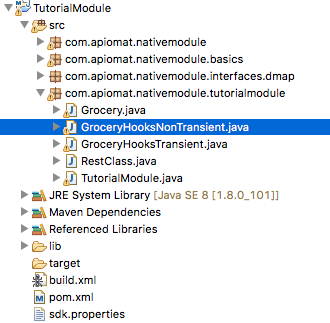Downloading/Uploading Native Modules
This tutorial will guide you through the basic concepts of how to download, import and upload the code of a native module. As this is just an introduction, link to the in-depth-articles will be given at the appropriate places.
Download
You already created a module, and maybe even some classes. Now you want to download the module-code to implement more advanced features than provided by the dashboard. To do this, you need to download the module-code.
-
Download the Module-Code as indicated below. The downloaded file is a zipped Java-Project.

-
Import the downloaded module-code into your IDE. In this tutorial, we will use Eclipse. Make sure that your IDE/editor uses UTF-8 character encoding to avoid problems!
-
There are many classes and files already generated into the module-code. The classes that concern you the most are the ones inside the package "com.apiomat.nativemodule.[modulename]". The usage of these classes are part of the next tutorials.

Module Upload
Let's say you changed something inside the code of the native module, for example because you absolved the Hook-Methods-Tutorial. Now you need to upload the module to synchronize the changes you made with the native module currently deployed in your application.
-
First, you have to insert your username and password into the file "sdk.properties". The file is located directly underneath the root of your module code.

-
Next, search for the"build.xml"-file inside your module-project, right click and select [ Run As > Ant Build ... ]. Select "Upload Native Module" and hit "Run".

-
Done!
There are still smoother ways to download/upload and import the native module code. This tutorial explains them in-depth.
Now, you may ask yourself "so, what exactly can I change inside the module-code that is worth uploading?". This is part of the next Tutorial: Non-Transient Hook Methods